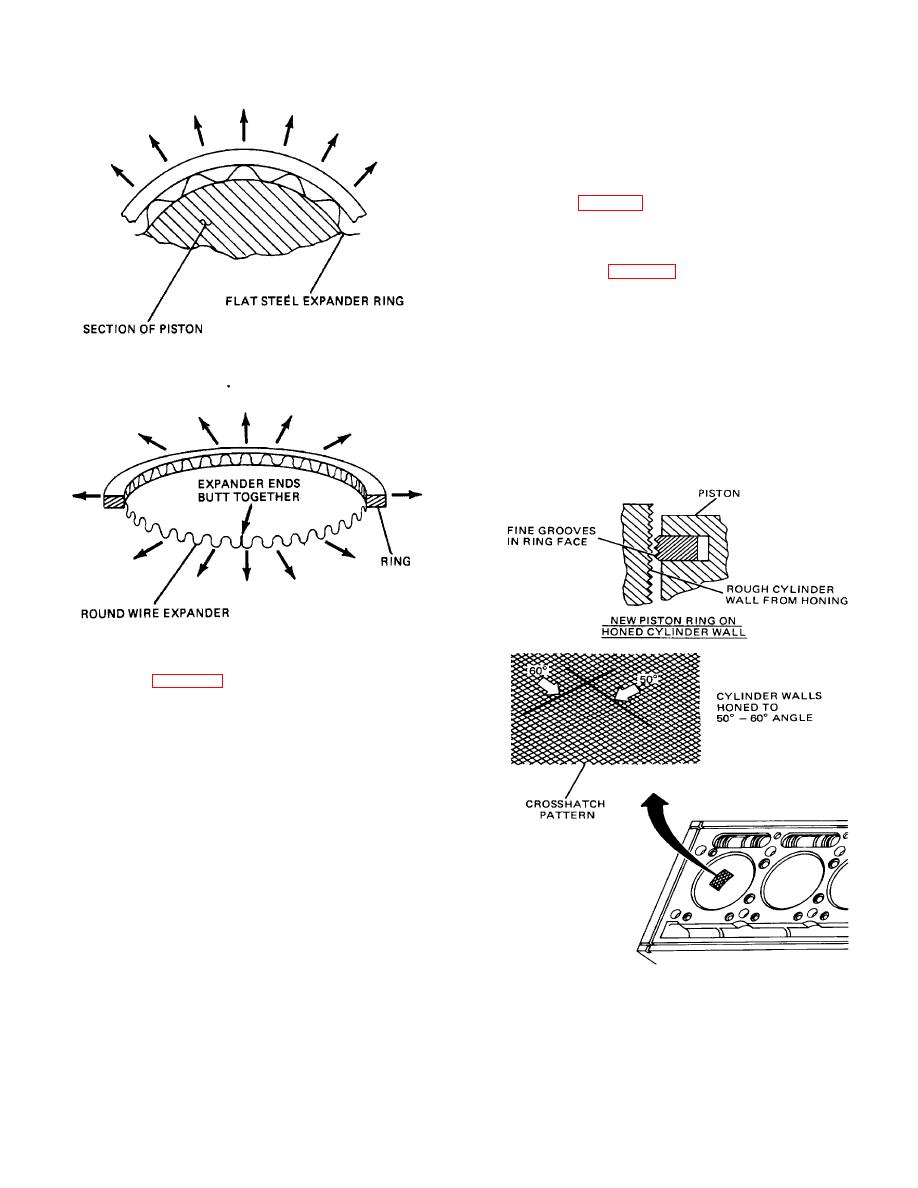
| Tweet |

Custom Search
|
|

|
||
 TM 9-8000
3-9. Crankshaft.
a. General (Fig. 3-34). The crankshaft is the part of the
engine that transforms the reciprocating motion of the
pistons to rotating motion.
b. Construction (Fig. 3-34). Crankshafts are made from
forged or cast steel. The forged steel unit is the stronger
of the two. It usually is reserved for commercial and
military use. The cast unit is used primarily in light and
regular duty gasoline engines. After the rough forging or
casting is produced, it becomes a finished product by
going through the following steps:
(1)All surfaces are rough machined.
(2)All holes are located and drilled.
Figure 3-28. 3-8.
Connecting Rods.
a. General (Fig. 3-33). The connecting rods connect
the pistons to the crankshaft. They must be extremely
strong to transmit the thrust of the pistons to the
crankshaft, and to withstand the Inertial forces of the
directional changes of the pistons.
b. Construction (Fig. 3-33). The connecting rods are
normally in the form of an I-beam. This design gives the
highest overall strength and lowest weight. They usually
are made of forged steel, but may be made of aluminum
in small engines. The upper end attaches to the piston
pin, which connects it to the piston. The lower end is
attached to the crankshaft. The lower bearing hole in the
connecting rod is split so that it may be clamped to the
crankshaft. Because the lower end has much greater
movement than the upper, the hole is much larger. This
provides
much
greater
bearing
surface.
Figure 3-29. Piston Ring Wear-In.
3-17
|
||
 |
||